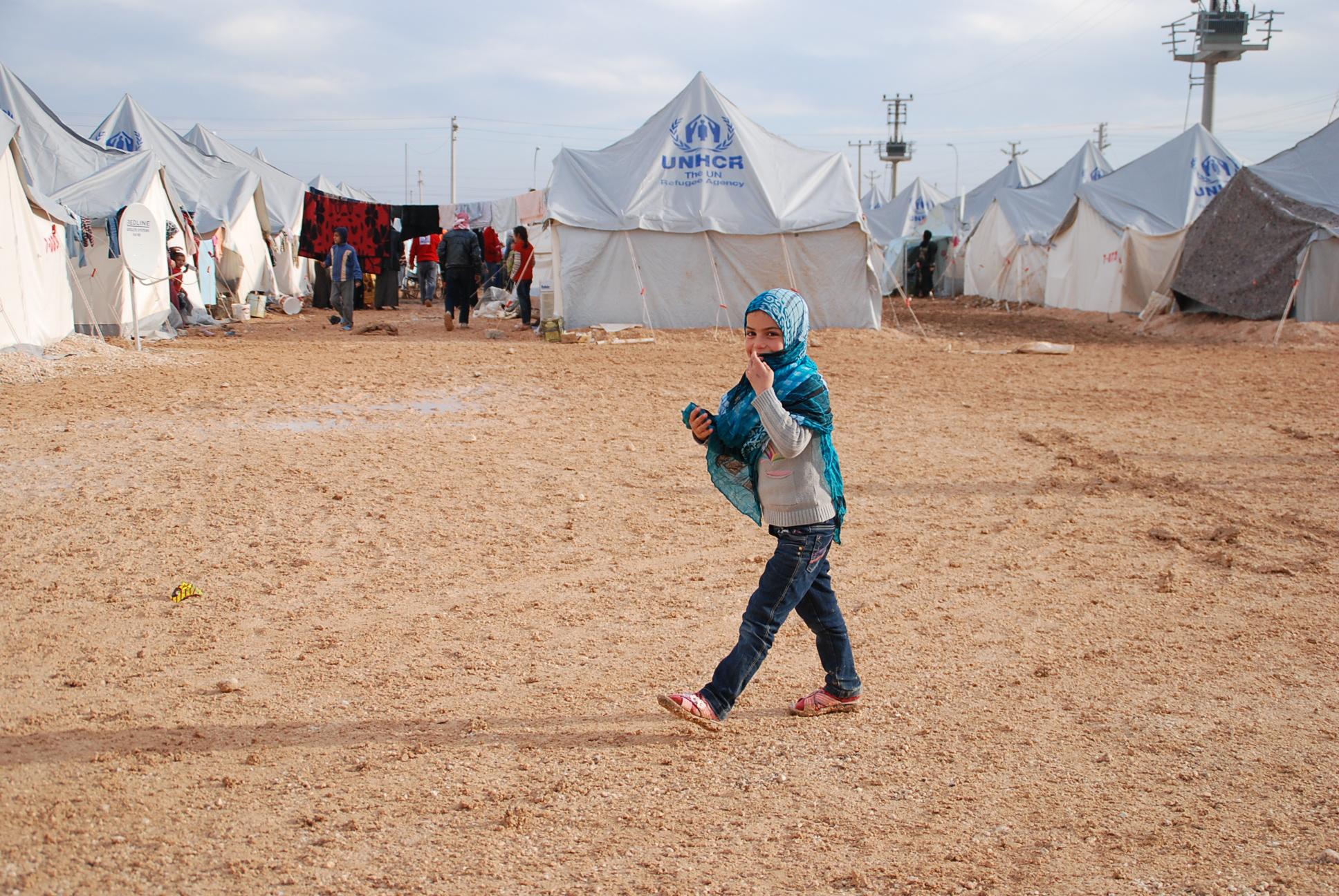By Jordan Teague, Bread for the World Institute
Roughly 65 million people around the world are currently forcibly displaced from their homes – the highest number since World War II. More than 21 million of these are refugees who have fled their countries and are seeking shelter, safety, and a better life in another country. War, other violence, and persecution are major reasons that refugees flee.
As we reported in the 2017 Hunger Report, Fragile Environments, Resilient Communities, conflict is a major cause of global hunger. People in conflict-affected countries are three times as likely to experience hunger as those who live in low-income but peaceful nations. In most of the conflicts, the fighting occurs largely in rural areas, where most people work in the agricultural sector. Armed conflict in farming regions caused most 20th century famines, and this appears to be the trend in the 21st century as well.
Refugees typically cross the border to a neighboring country, where they often find refuge in humanitarian camps. Because refugee families have left their homes, livelihoods, and jobs, they frequently depend on support from humanitarian groups to meet basic needs such as water, food, shelter, and clothing. Refugee families often end up living in camps for years. This is clearly an expensive solution, given the enormous numbers of displaced people from 33 active conflicts. It also prevents people from working, as the vast majority want to do, and being able to start independent lives.
Operating humanitarian refugee camps is not a sustainable solution for either the refugee families or the donors who pay for many of their necessities. The United States has been a leading humanitarian donor for decades. Mass population movement and living in close quarters in refugee camps increases the risk of hunger, malnutrition, and illness. More than 75 percent of Syrian refugees are women and children, and other refugees around the world are also disproportionally women or children. As a result, as we have reported before, many of those who live in refugee camps are babies and toddlers in the critical 1,000 day window for nutrition. Lack of proper nutrients during this window can cause irreversible damage to a child’s development. While humanitarian groups like the UN Refugee Agency (UNHCR) and the World Food Program provide excellent support and care, no refugee camp can be an ideal environment for children to grow up.
What can the United States do to improve the situation? First, our government must lead efforts to prevent new crises that will force even more people to flee for their lives. We can do this by working to reduce the factors that produce refugee situations. Finding solutions to food insecurity and lack of economic opportunity in developing countries, especially in rural areas, is one way to reduce the likelihood of armed conflict and subsequent mass migration. For example, U.S. development assistance can support national governments in efforts to create rural jobs, particularly in agriculture.
Second, the United States should support the mandate of UNHCR, which is to identify and work toward what are called durable solutions for refugees. There are generally three options: eventual return to their home country, local integration into the country to which they fled, or resettlement in a third country. Less than one percent of all refugees are resettled in a third country. They are the people who have been determined to be most vulnerable, whose “life, liberty, safety, health, or other fundamental rights” are at risk in their home country.
At a time when the world faces refugee crises of historic proportions, we cannot turn our back on those most in need. Delaying or blocking the admission of refugees to this country will increase hunger.
Instead, the United States must do more to ensure that the needs of forcibly displaced people are met and that they are protected. This includes increasing cooperation with the international community to ensure that bilateral programs and international organizations are well equipped to respond quickly and reliably.
Some countries, although small and not wealthy, have taken in hundreds of thousands of refugees from neighboring civil wars. Host countries and communities need more and better support from the United States and other donor countries to meet the needs of so many desperate people.
The world community is also responsible for ensuring that the most vulnerable refugees, who cannot return home, have a place to go where they are welcomed and safe, and which can meet their most basic needs. The United States is one such place.
It is not solely up to the United States to manage the global refugee crisis. Neighboring countries that host large numbers of refugees, other donors, and the international community must also do their part. But not only is it in our own national security interest to help those in crisis, but it is also our moral obligation not to turn away from those who most need help.
Jordan Teague is international policy analyst for nutrition at Bread for the World Institute.



